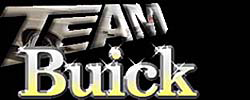The vacuum and fuel parts of the pump are separate and do not indicate much about the performance of the other part. That doesn't mean it does or doesn't work.
There is a typical pump rebuild in the reference section if you would like to have a look at it. A good source for a kit is Egge.







 WEBNOTE: When inserting an email in a posting, use the "smilie" @ so that web robots don't pick up your address and send you more junk mail!
WEBNOTE: When inserting an email in a posting, use the "smilie" @ so that web robots don't pick up your address and send you more junk mail!



Bookmarks